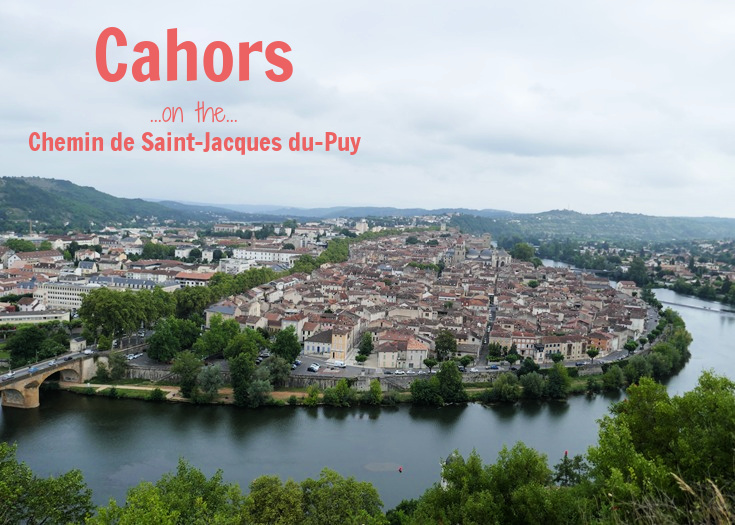
(Published May 2013, last updated June 2025)
Two thousand years ago, long before France was France, the Roman invasion was spreading throughout the known world. In the first century BC, a small settlement on a corner of land bordered on three sides by the River Lot, was conquered and the town of Cahors was established.
Today Cahors is a vibrant town and the centre of a thriving wine industry—an historic quarter filled with ancient buildings and narrow lanes only adds to the charm.
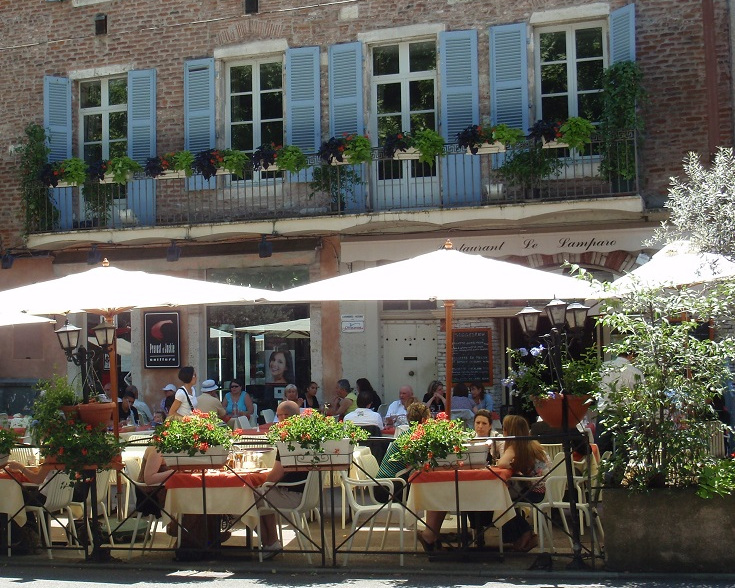
Café le Lamparo in the old section of Cahors
From the twelfth until the fourteenth century, Cahors prospered. Trade along the river flourished and bankers and merchants relocated here from as far away as Lombardy in Italy. Wine from the region was exported throughout France and beyond to Great Britain.
In the fourteenth century, during the Hundred Years War, a defensive wall with eleven towers and two gates was built along the northern edge of town. (The River Lot provided protection on the other three sides of town.) All that remain today are Tour Saint-Mary, Tour de Morlaas and Porte Saint-Michel in Rue de la Poudrière.
Before you scroll to the bottom for practical tips on where to stay and where to eat, let’s take a look around town.

Place François Mitterand on Boulevard Gambetta
When you arrive in Cahors, call into the Tourist Office on Place François Mitterrand and ask for Itinéraires à travers la ville—a map which will guide you around town passing 44 historical sights.
Let’s start exploring…
Take a walk around town—or ride the Tourist Train
Boulevard Gambetta, the main street, divides Cahors neatly into new and old sections. Hôtel de Ville (Town Hall), Palais de Justice and other important civic buildings were built on the western side in the nineteenth century but to the east, you’ll find the cathedral and many houses dating from the thirteenth to sixteenth centuries.
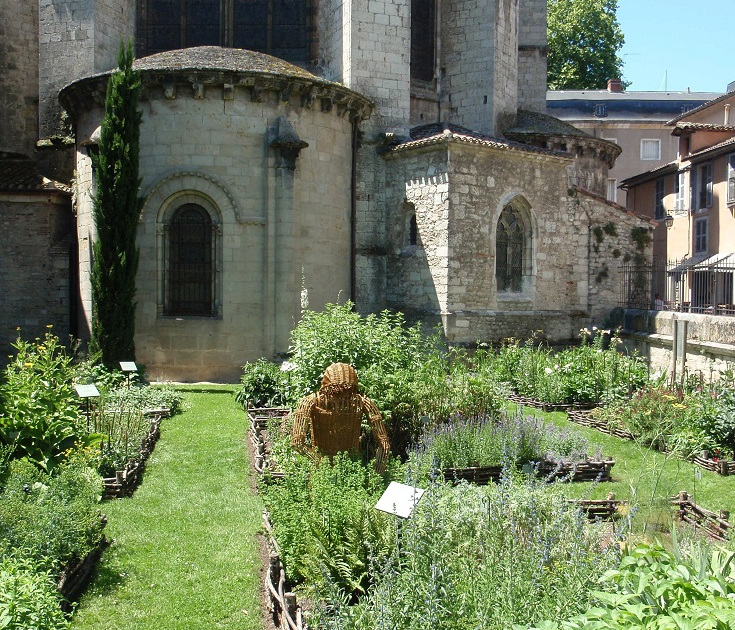
The gardens behind the cathedral provide a constant supply of fresh flowers for the altar
If your time is limited, or you’ve done enough walking over the last few days and weeks, Le Petit Train de Cahors will whisk you past all of the main sights in under an hour. It leaves from Quai Valentré and operates every day from May until September.
The Tourist Office also offers several walking tours based around a variety of themes, such as history, wine or monuments such as the cathedral and Pont Valentré.
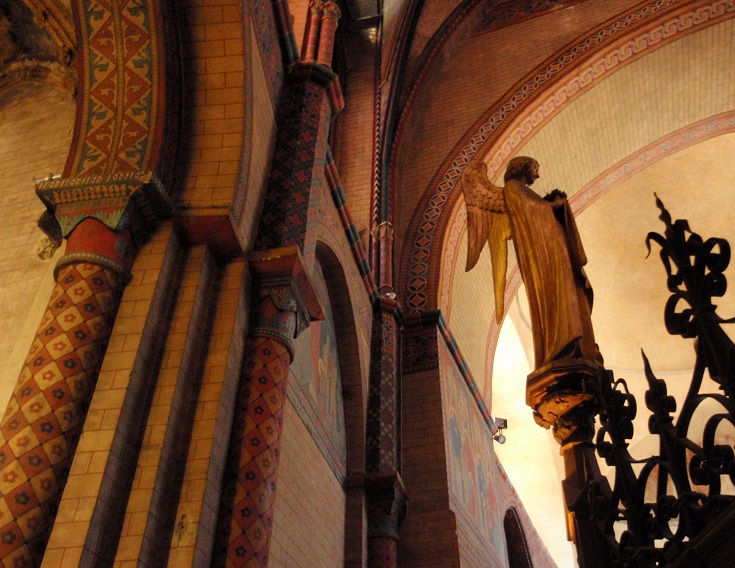
The richly coloured interior of the cathedral
Visit the cathedral and cloisters of Saint-Etienne
Construction of Cathédrale de Saint-Etienne began in the eleventh century, although the site had been a place of worship for five hundred years before this. The nave that you stand in today dates from 1120, the north portal was added in 1150, and over the following six hundred years, the building was enlarged to include a choir and several chapels—resulting in an eclectic mix of architectural styles.
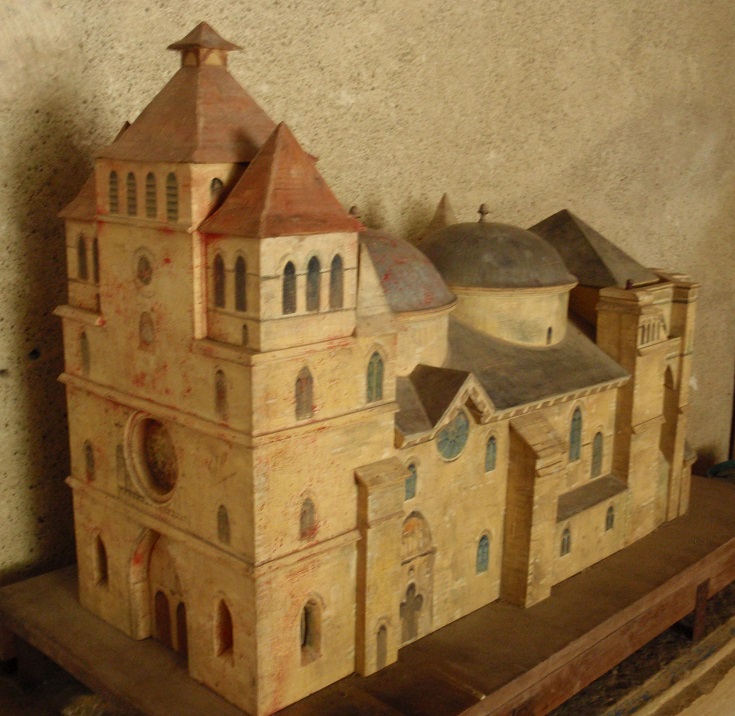
Model of Cathédrale de Saint-Etienne
The cathedral is closely surrounded on both sides, but a wooden model built by monks allows us to appreciate the detail and beauty more closely.
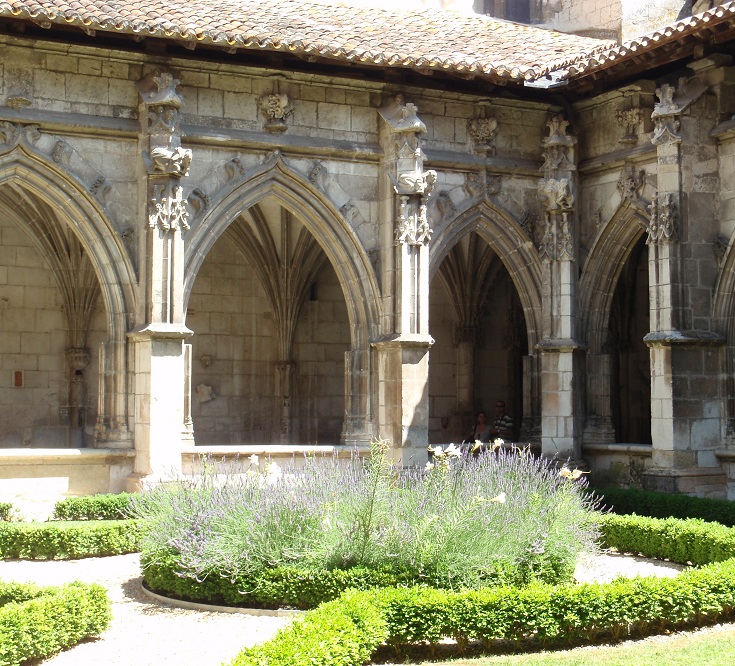
The cloister adjoining Cathédrale de Saint-Etienne
Early in the sixteenth century, a cloister was added next door and remains an oasis of calm and tranquility despite the constant parade of visitors.
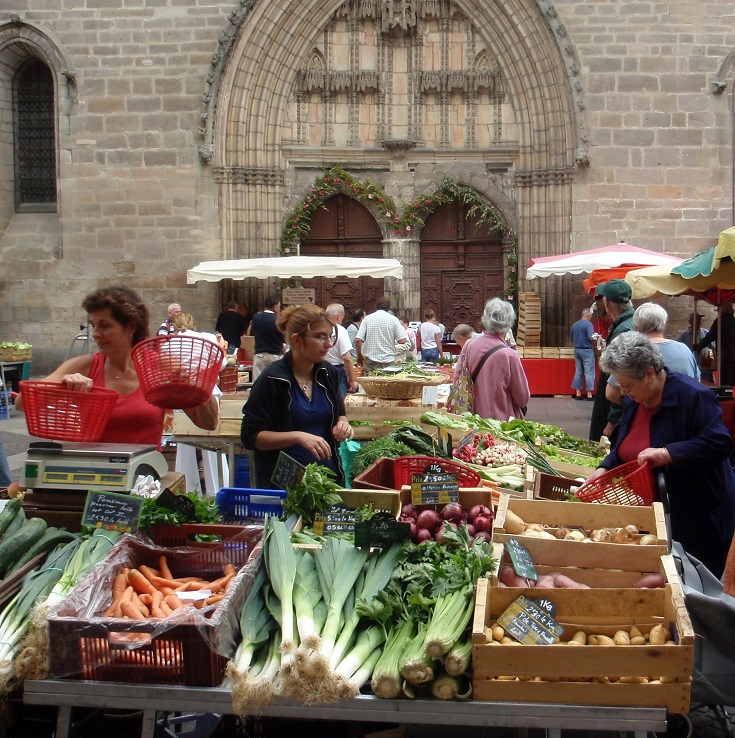
Saturday morning market in Cahors
Search for the devil on Pont-Valentré
By the end of the fourteenth century, three bridges spanned the River Lot connecting Cahors to southern France. The oldest two have long gone, but work on the newest and most famous bridge, Pont Valentré, began in 1308.

Pont Valentré
Legend has it that the architect of Pont Valentré became increasingly worried as construction took longer than expected and funds ran out. He asked the devil for help and promised to pay him with his soul when the bridge was complete. When construction was almost finished, the architect devised a way to free himself from his pact by asking the devil to bring water for the remaining work using a sieve. Of course, the devil was unable to comply and so, was never paid.
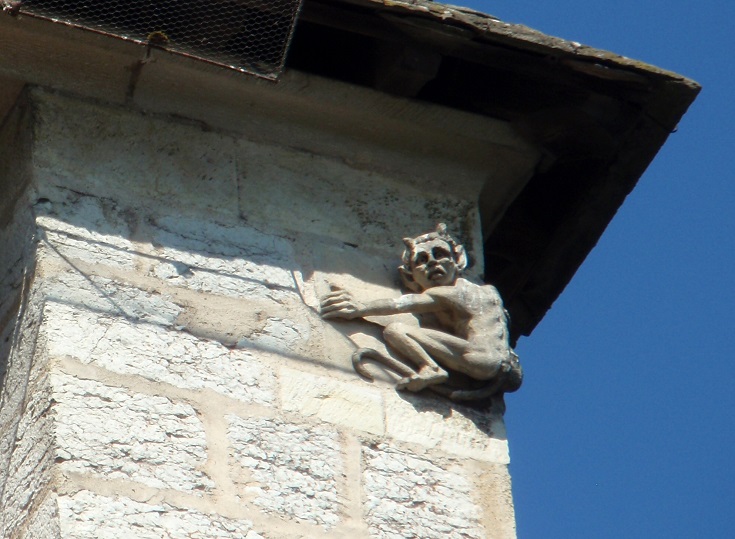
The devil perched high on Pont Valentré
In a final twist to the story, it is said that one stone remains missing from the bridge and whenever it is laid in place, another falls loose. During restoration of the bridge in 1879, a small sculpture of the devil was added high on one of the towers.
Visit le Musée de la Résistance
The highlight of my stay in Cahors was a visit to the Musée de la Résistance.
The day I visited, we were shown around by a delightful lady – a young girl during the war – who explained the exhibits in a mixture of French and English. The museum overflowed with photos and artefacts from WWII – depicting everyday life in Cahors during the German occupation, the hardships, the dangers and the role of the resistance and pays a moving tribute to the bravery and often distressing fate of those who risked their lives to protect their countrymen.
Since then, the museum (located on Place Bessières, across the road from Place Charles-de-Gaulle) has closed for renovation but is due to reopen in the same location under the newly refurbished cinema complex. Until then, the exhibits are displayed in the Provost’s Court at 1 Place Jean-Jacques Chapou. Ask at the Tourist Office for opening dates and hours.
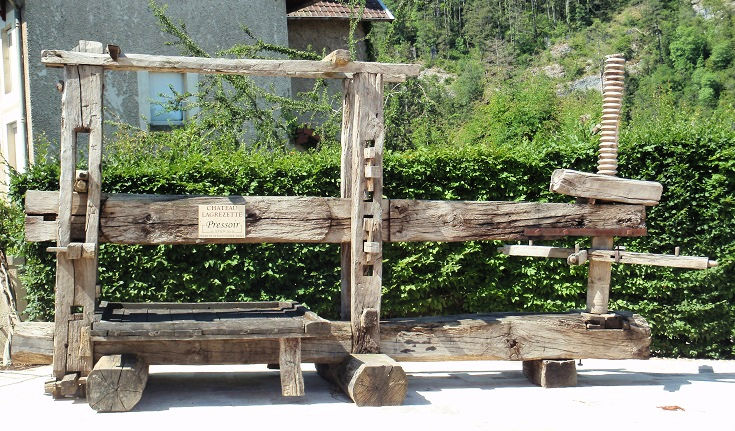
Old wine press, once used to crush grapes, on display near Pont Valentré
Sample the finest Cahors wines
The area around Cahors is well known for its wineries. If you are able to base yourself here for a few days, rent a car and head out into the countryside to discover them. The Tourist Office has a number of brochures describing suggested day trips.
During July and August, les Croisières Fénelon offers a cruise west along the River Lot which includes a visit and a tasting at one of the local wineries before returning to Cahors by bus.
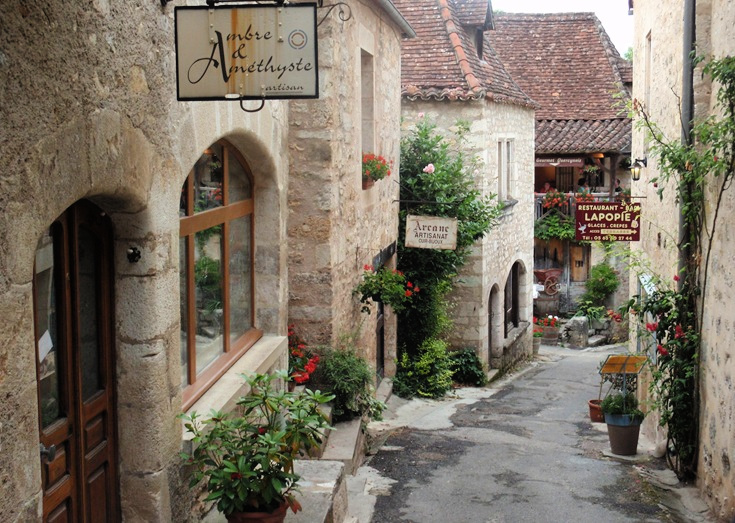
Gift shops line a lane in Saint-Cirq-Lapopie
Detour to the ‘most beautiful village’ of Saint-Cirq-Lapopie
If you have arrived in Cahors along the traditional GR 65 path of the Chemin de Saint-Jacques, you’ll have missed the ‘most beautiful village’ of Saint-Cirq-Lapopie. It’s not too late to visit and one of the easiest and most pleasant ways is by joining the river cruise offered by les Croisières Fénelon in July and August. The cruise follows the River Lot east to Tour de Faure then travels to Saint-Cirq-Lapopie by bus where you’ll enjoy a guided visit of the village.
If you prefer to visit under your own steam, you’ll find a link to the daily bus timetable below.
FAST FACTS
Which long-distance walk in France visits Cahors?
Chemin de Saint-Jacques du-Puy (Stage 3: Figeac to Cahors) and (Stage 4: Cahors to Eauze)
Look inside the CHEMIN DE SAINT-JACQUES (PDF) guidebook
Where is Cahors, France? Find it on Google maps
Cahors is located 338.8 kilometres (211.8 miles) along the traditional Chemin de Saint-Jacques path.
My preferred route follows the variante from Figeac through the Célé valley which increases the distance to 359.7 kilometres (224.8 miles)—a relaxing twenty-one day walk from the starting point of Le Puy-en-Velay, but if you are pressed for time, Cahors can be reached quite comfortably in sixteen days. Read more to learn all you need to know about both routes.
Click through to find my suggested itinerary for all five stages of the walk
If you prefer to set your own agenda, I share the steps I take to plan my itinerary on any long-distance walk (using the Chemin de Stevenson as a case study)
Transport options to and from Cahors
Train line Brive—Cahors—Toulouse connects Cahors with Brive-la-Gaillarde and Toulouse. Both towns have daily train connections to Paris.
Lot bus line 875 Cahors—Lauzerte operates on weekends and public holidays from June to September, with daily services in July and August, connecting Cahors to Montcuq, Barguelonne and Lauzerte.
Lot bus line 882 Montcuq-en-Quercy-Blanc—Cahors operates on weekdays, connecting Cahors to Montcuq.
Lot bus line 889 Figeac—Cahors connects Cahors with several towns on the previous stage of the Chemin de Saint-Jacques, including Figeac, and with Cajarc (on the traditional GR 65 route) and with Tour-de-Faure (Saint-Cirq-Lapopie), Conduché, Bouziès and Vers (if you are following the Célé variante).
Les Croisières Fénelon operates le Petit Train de Cahors and river cruises to Saint-Cirq-Lapopie and the nearby wineries. On the Les Croisières Fénelon website, you’ll find the train timetable and further information on all river cruises.
Tourist Office in Cahors
You’ll find the Tourist Office on Place François Mitterand. Opening hours are listed on the Tourist Office website.
Check for up to date information about the Musée de la Résistance.
Accommodation in Cahors
You’ll find a range of options for lodging in Cahors, including:
Hotels
Hôtel Divona
Hôtel Terminus
Hôtel-Restaurant la Chartreuse
Brit-Hôtel le Valentré
Hôtel Jean XXII
Hôtel le Coin des Halles
Chambres d’hôtes
Chez Pierre (5 rooms, 10 people)
Le Papillon Vert (3 rooms, 8 people)
La Bellours (2 rooms, 4 people)
Troisième Droite (1 room, 2 people)
Pat’s B&B (1 room, 2 people)
Gîtes
Auberge de Jeunesse (38 rooms, 94 people)
Le Relais de Jacobins (15 people)
Gîte le Deuxieme Soufflé (3 rooms, 11 people)
La Maison des Pèlerins (10 people)
Le Petit Réfuge (5 people)
Gîte l’Étoile Flamboyante (5 people)
Le Cocon (5 people)
La Casa del Trel (5 people)
Gîte Saint-Laurent (4 people)
Gîte Chez Annick 2 (3 people)
Gîte Habitat de Jeunes de Quercy
Campground
Rivière de Cabessut
How to book accommodation in French
Where to eat in Cahors
There are more cafés and restaurants in Cahors then you could ever hope to try during a short stay. Options range from takeout, cheap and cheerful to refined and elegant, with many showcasing the local produce and specialities.
As you’d expect in any medium sized town, Cahors has several supermarkets and bakeries where you can pick up other essential items.
If you are in Cahors on a Wednesday or Saturday morning, combine your visit to the cathedral with a wander through the market which sets up in front of the church. Like markets everywhere in France, these are a feast of fresh, local produce including fruit, nuts, olives—in fact everything needed for a delicious trail mix blend and much more!
Practical tips for long-distance walking—preparation, packing and avoiding blisters
Purchase the Chemin de Saint-Jacques (PDF) guidebooks
Purchase five guidebooks covering Le Puy-en-Velay to Saint-Jean-Pied-de-Port
